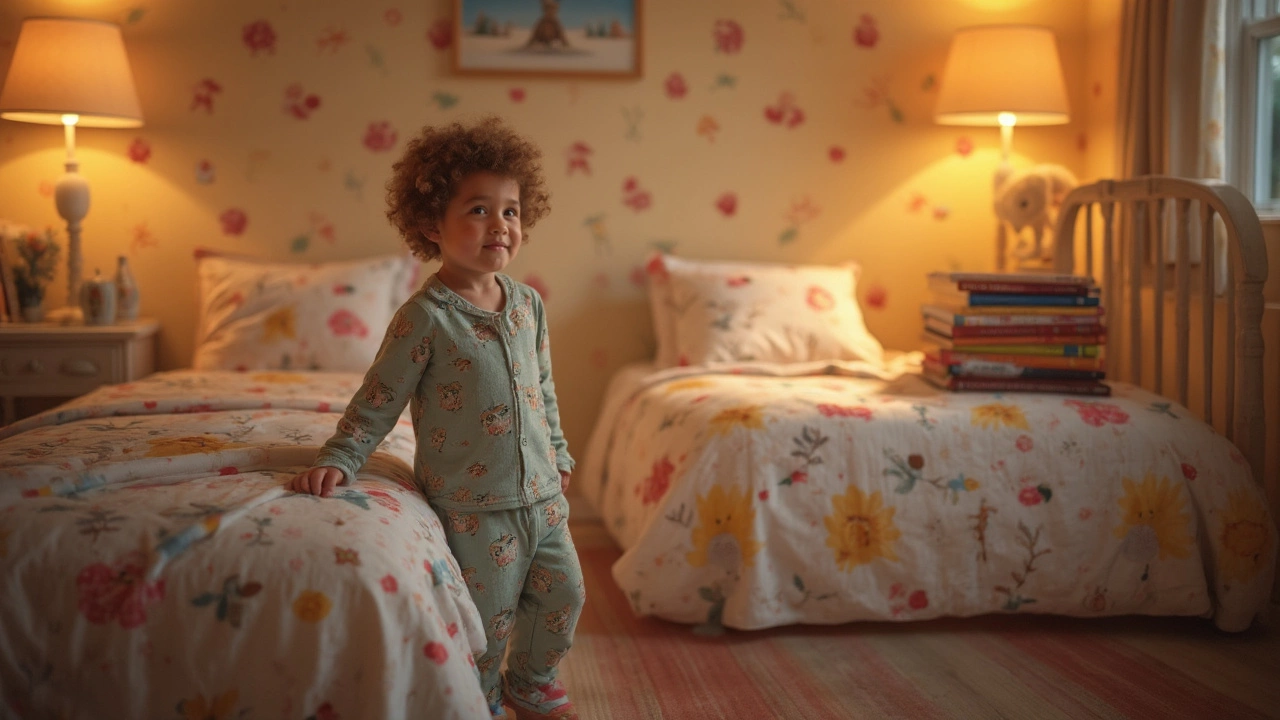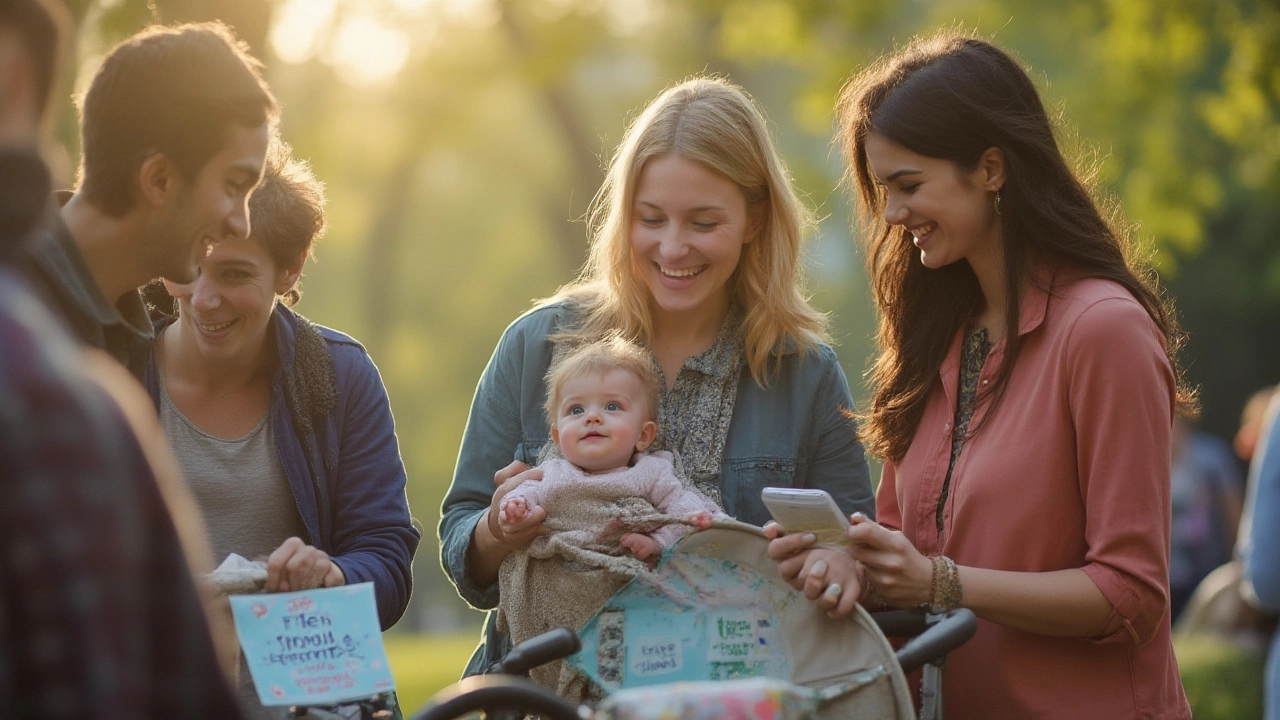Is a Sling Better Than a Baby Carrier? A Real-World Comparison

Ask ten parents which they like better—a sling or a structured baby carrier—and you’ll probably get ten totally different answers. Not really helpful when you just want something that won’t hurt your back and will keep your baby happy. The thing is, both slings and baby carriers have some real perks, but they also come with quirks nobody really talks about before you buy.
Here’s something most stores forget to mention: what’s “best” depends on your day-to-day life. Are you juggling groceries and toddlers? Trying to soothe a newborn who only naps while held? Your answer will shape what actually works. I’ve tried both with my own messy, unpredictable baby days, so let’s break down the stuff you’ll wish you’d known before swiping your card. Comfort, safety, how hot you’ll get in the summer—let’s get practical and find out which carrier could honestly save your sanity.
- What Exactly Are Slings and Baby Carriers?
- Comfort and Support for Both of You
- Safety and Everyday Practicality
- Which One Wins for You?
What Exactly Are Slings and Baby Carriers?
Let’s break down the basics. A sling is usually just one long piece of sturdy fabric. You wrap it around yourself and your baby, creating a snug little pouch or seat. Most slings go over one shoulder and across your torso, kind of like a sash. There are a couple of main types: ring slings (with two rings for quick tightening) and wrap slings (just a long stretch of cloth).
Now, a baby carrier is a more structured piece of gear. These are shaped with padded straps, clips, buckles, and sometimes little hoods. They’re designed to put weight on both your shoulders and the middle of your back, kind of like a dependable backpack for your baby. You’ll see options called “soft-structured carriers,” “mei tais,” or even backpack carriers for bigger kids, but the idea is the same—get support, get hands-free, and (hopefully) avoid back pain.
Here’s a quick cheat sheet so you can see how these compare at a glance:
| Type | Main Features | Recommended Age/Weight | Ease of Use |
|---|---|---|---|
| Sling | One-shoulder, fabric, adjustable with ring or wrapping | Newborns up to 35 lbs | Quick, but some learning curve |
| Structured Carrier | Padded straps, buckles, even weight | Newborns (with insert) to 45 lbs | Easier for beginners, straightforward |
One tip: if your baby is still tiny and floppy, slings let you hold them snuggly in that curled-up newborn position. But if your back needs help, anything with good padding and support—like a structured baby carrier—might quickly become your best friend. Most parents don’t realize they might end up using both styles at different stages or just depending on the errand. That’s totally normal and not a sign you bought the “wrong” thing.
Comfort and Support for Both of You
The wrong carrier can leave your shoulders aching or your baby in a weird slouch. When it comes to comfort, slings and baby carriers are not built the same. Slings are usually just one long piece of fabric. The good thing? They mold easily around a newborn, so your baby feels snug like they’re back in the womb. But, all that weight sits on one shoulder, which can be rough if your kiddo’s getting heavy or you’re wearing them for hours.
Now, structured baby carriers (the ones with padded straps and buckles) are a whole different story. They split the baby’s weight between both shoulders and your hips. This means you have a much better shot at making it through a long walk without that burning neck pain. Here’s something cool: studies show most parents can wear a standard carrier for over two hours without feeling sore. Slings, on the other hand, are usually tapped out at about 30 minutes for comfort—unless you’re switching shoulders or using a wrap style.
Let’s get real for a second: Your baby’s hips matter, too. Pediatricians love carriers that keep baby legs in an “M” position, with knees higher than their little bum. This helps prevent hip dysplasia. Most slings can do this, but it takes a little practice with how you spread the fabric. Structured carriers almost always get it right out of the box, making them the go-to once your baby is wiggling around more.
| Feature | Sling | Baby Carrier |
|---|---|---|
| Weight Distribution | One shoulder | Both shoulders & hips |
| Max Comfort Duration | ~30 mins | 2+ hours |
| Adjustability | High (but takes practice) | High (simpler for beginners) |
| Hip Healthy Position | Possible with correct fit | Standard feature |
Here’s a quick tip: If you’re planning on frequent short trips (school runs, grocery dashes), a sling might feel cozier for those quick jobs, especially with a tiny baby. But if you’ll be out longer, or your kid’s growing fast, a baby carrier will probably spare your back way better. Don’t be shy about trying a few types—what fits one parent or baby perfectly can drive someone else nuts after ten minutes.

Safety and Everyday Practicality
Let’s get real: nothing matters more than your baby’s safety, especially when your hands are full and sleep is a distant memory. Whether you choose a sling or a baby carrier, you’ve got to nail the basics of safe babywearing. That means baby’s chin should never squish into their chest, their hips need support, and their face needs to be always visible. Forget to check, and you risk things like breathing issues or hip problems. The International Hip Dysplasia Institute notes that wide-based carriers are a safer pick for hip development than those that let legs dangle.
Fast forward to everyday use. Slings can be awesome for quick ups and downs, like trips from the car to the shop or calming an overtired infant at home. They roll up tiny, so you can stuff them in a diaper bag without a second thought. But here’s the catch: adjusting a sling isn’t always that quick if you’re not used to them. New parents sometimes find the learning curve steep. If the fabric isn’t spread right, it can dig into your neck or let baby slump—which clearly isn’t great.
Structured carriers, on the other hand, give you sturdy buckles, clips, and padding. No guesswork—just put it on, adjust the straps, and go. Some brands now have little safety reminders sewn in, showing where baby’s legs and arms should sit. These are usually a win when you want hands-free time for chores or errands. But the padding that makes them comfy can also turn you into a sweaty mess once summer hits or inside busy stores.
Here’s a quick look at how both options stack up for safety and real-life use:
| Feature | Sling | Baby Carrier |
|---|---|---|
| Hip Support | Depends on wrap and technique | Most models are hip-healthy |
| Face Visibility | Must manage fabric placement | Usually easy to check |
| Set Up Speed | Fast, after lots of practice | Fast, even for beginners |
| Comfort in Heat | Normally cooler | Can feel bulky/warm |
| Storage | Rolls up tight | May be bulky to pack |
And just a tip: you should always check your carrier for wear, loose stitching, or fraying. Even a small tear can quickly turn serious. Read the weight limits! Babywearing slings and carriers usually cap at around 35 pounds (16 kg), but double-check your specific model. Never wear baby during activities that could bump or jostle them too hard—so, no biking, cooking at the stove, or jogging with slings.
Bottom line? Neither option scores a perfect 10 on every safety or convenience point, so test a few at a local shop if you can. And if you ever feel unsure about fit or something seems off, trust your gut: it’s usually right.
Which One Wins for You?
So which one really fits best into your day: a sling or a baby carrier? The answer isn’t just about which one looks cute or has the most glowing reviews—it's how they work with your everyday life, your baby's needs, and how your own body feels after a long walk.
First up, let’s look at a real side-by-side:
| Feature | Sling | Baby Carrier |
|---|---|---|
| Best age range | Newborn to 6 months | Newborn to toddler (some up to 45 lbs) |
| Learning curve | Takes practice tying | Easier, usually buckled |
| Breastfeeding | Discrete, on-the-go feeding | Some allow, most less convenient |
| Weight distribution | One shoulder holds weight | Spreads weight across shoulders and hips |
| Packability | Super compact | Bulkier, harder to tuck away |
A baby carrier is often the favorite once your child starts putting on those adorable chunk rolls. It gives way better back support, balances weight, and frees up both arms—key when you need to tackle chores or public transport. Most structured carriers are ready for the long haul, literally. Parents who regularly walk or hike with their kids tend to stick with carriers beyond the baby stage.
But slings shine for quick ups and downs, especially in the newborn months. They're the go-to for easy breastfeeding, and you can fit one in even the tiniest purse. If your little one loves curling up against you or you’re recovering from a C-section, a soft, stretchy sling can be a game changer. Just remember: all those pretty wrap videos online don’t show the 10 minutes you spend untangling fabric at the playground.
- Quick trip? Busy older kid? Grab a sling.
- Long walk? Sturdy back needed? Opt for a structured carrier.
- Worried about overheating? Check for breathable mesh options—no one wants a sweaty nap buddy.
If you can, try before you buy. Many baby stores will even let you rent carriers or slings for a week. Pay attention to how your back and shoulders feel, and whether your baby sleeps peacefully or fusses. Your own comfort really matters: one survey found that 73% of parents switched carrier types at least once in the first year!
Bottom line: Some families end up using both, swapping them depending on the day. And anyone who says there's just one right answer probably hasn’t tried lugging a 20-pound toddler to the grocery store with a wrong-sized carrier.


